StableBit Scanner 2.4.0 BETA has now been out for a bit and it has some interesting new functionality that I think is worthy of a blog post.

Download your copy here: http://stablebit.com/Scanner/Download
File System Scan
Up until now, the StableBit Scanner has been designed to do everything that it can to ensure that the physical surface of your hard drives remains readable, and to recognize the first signs of mechanical wear, in order to warn you that your data might be in trouble.
But there is another way that your data can get corrupted, and that is through file system formatting damage.
When you have formatting damage on a hard drive, the hard drive itself is capable of reading and writing every bit correctly, but the way that your files and folders are written on the disk is inconsistent (or corrupt).
Detecting File System Errors
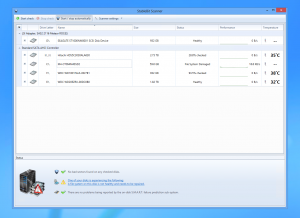
Starting with version 2.4.0 of the StableBit Scanner, it will now automatically detect file system errors by periodically scanning all of your volumes (or partitions), on each disk, for corruption.
Once damage is detected, you will get notified by all of the supported notification systems (tray icon, email, speech, or the Dashboard).

How it Works
The file system scan works by utilizing the built-in chkdsk utility, in Microsoft Windows.
But this wouldn’t be the StableBit Scanner if we didn’t add some bells and whistles on top of what chkdsk already provides.
- The file system scan is automatic. It’s performed after the surface scan completes on a particular disk.
- We support temperature equalization and overheat protection on the file system scan, just like with the surface scan. This means that if your disk is overheating due to a file system scan, the scan will be suspended.
- Scan throttling using Background I/O is supported for a file system scan, if enabled in Scanner Settings.
In essence, the file system scan will not interfere with existing disk activity and will not overheat your disks. This is something that chkdsk alone does not offer.
Controlling the File System Scan
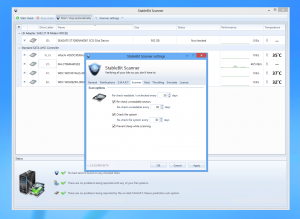
You can control the re-scan interval, or completely disable the file system scan from Scanner Settings.
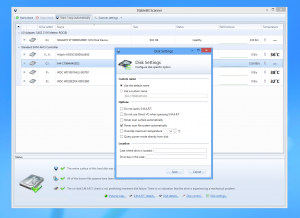
Or you can disable the file system scan on a per-disk basis.
File System Repair
Alright, so you’ve got file system damage, now what?
You can quickly and easily repair the file system damage from within the StableBit Scanner.
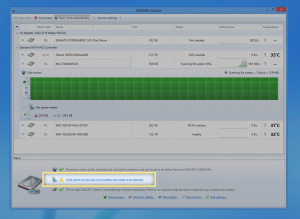
Just select the damaged disk and click on the link in the Status panel.
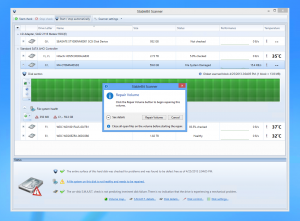
Then just click Repair Volume to begin the repair.
After a few minutes you will get the confirmation that the file system was repaired.
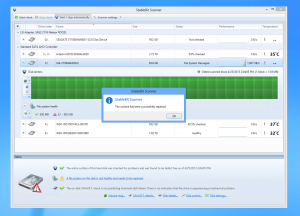
Locked Volumes
There are a couple of issues that can complicate the repair process. In order to repair a file system on a volume, Microsoft Windows requires that no files be open on that volume.
If there are file open, you have the choice of force closing them.
If this is the case, then the StableBit Scanner will present you with the following dialog:
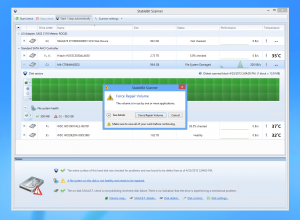
The dialog warns you to save all of your work before continuing, because the volume will not be accessible to other application while it is being repaired.
There is yet another possibility where Microsoft Windows is not able to force close all the files on a volume. For example, if the Operating System itself is running on the damaged volume, or there is a page file on that volume.
In this case the StableBit Scanner will automatically schedule the repair operation for the next reboot.
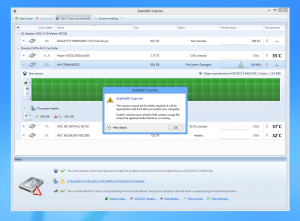
The next time that you restart the computer, it will repair the damaged file system before Windows starts.
Sector Scan Age
Alright, that covers the new file system scan and repair feature. Let’s switch gears and talk about sector scan age.
One of the main functions of the StableBit Scanner is to re-scan the entire surface of each disk for errors. This serves 2 very important functions:
- It “refreshes” the entire surface of the disk, in order to prevent what is often termed as “bit rot”. Essentially it tells the drive to re-assign weak sectors before they get a change to become completely unreadable.
- It detects instances where the on-disk built-in error recovery system has failed to recover a damaged sector, which essentially means that some previously written data was lost. This is a great indicator that your drive is failing.
But before StableBit Scanner 2.4.0, there was no way to visually tell whether a disk’s surface is actually being re-scanned in a timely manner.
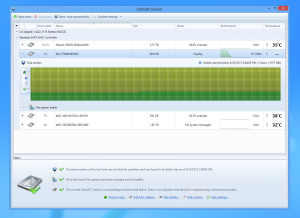
Starting with StableBit Scanner 2.4.0 you can now easily tell when sectors on a disk have not been recently scanned.
Each sector will slowly turn from green to yellow as its last scan time becomes older.
I think that this is pretty neat new feature, so I thought that I’d mention it here. It was actually inspired by the way plants slowly turn from green to yellow if you forget to water them. Thus giving you a clear indication that something is not right.
If you have any suggestions on how to make these features better, please send them this way: https://stablebit.com/Contact
Thanks for reading.
